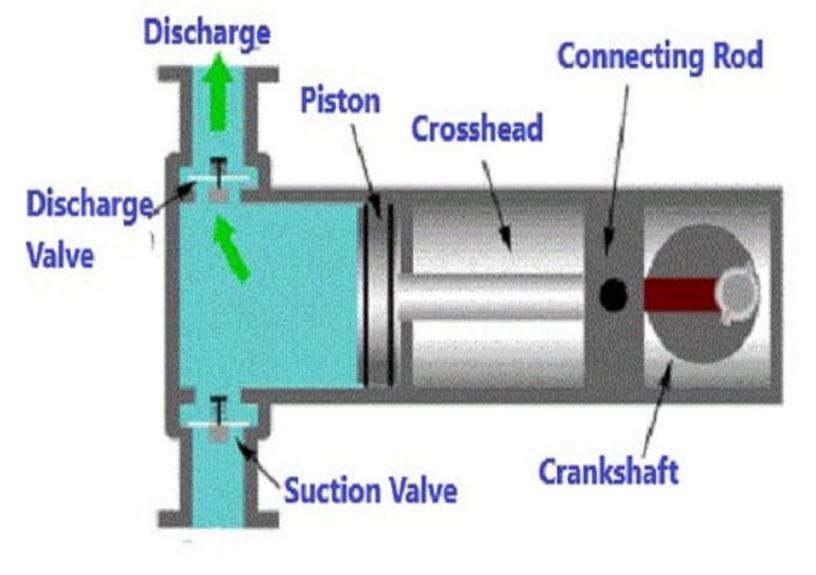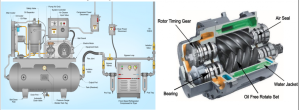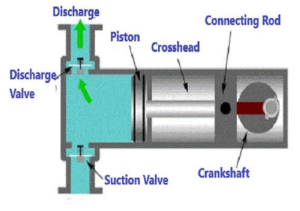Compressor Lubrication – Vol 3 Issue 1
In the industry we are all familiar with compressors. Generally air compressors are used to provide us with air for operating pneumatic equipment and machinery. Additionally, compressors can be used to increases the pressure of a compressible fluid, such as a variety of gases for use in various applications. Depending on the application and the fluid being compressed – the lubrication of compressors is extremely important. Inability to properly lubricate compressors or the use of incorrect lubricants can create conditions leading to catastrophic failure of the unit or even more serious circumstances.
There are two main categories of compressors:
Positive displacement compressors traps a certain inlet volume of gas in a given space and then elevates this trapped gas to a higher pressure by forcing it into a smaller volume.

Rotary, diaphragm and reciprocating compressors fall under this classification. Rotary compressors function by forcing gases into smaller spaces through screws, lobes or vanes, while diaphragm compressors work by compressing gas through the movement of a membrane. Reciprocating compressors compress gas through a piston or series of pistons driven by a crankshaft.

Dynamic compressors work on the principle of imparting velocity to a gas stream and then converting this velocity energy into pressure energy. Centrifugal, mixed-flow and axial compressors are in the dynamic category. A centrifugal compressor functions by compressing gas using a rotating disk in a formed housing. A mixed-flow compressor works similar to a centrifugal compressor but drives flow axially rather than radially. Axial compressors create compression through a series of airfoils.
Nearly all compressors have moving components and hence require a form of lubricant to either cool, seal or lubricate internal components. Selection and maintenance of compressor lubricants are extremely important as these lubricants are often subjected to severe operating conditions. When gas is compressed, it can have adverse effects on the lubricant. This can result in a noticeable decline in viscosity along with evaporation, oxidation, carbon depositing and condensation from moisture accumulation. Therefore, before selecting a compressor lubricant, you should first understand the operational characteristics of the compressor and the possible lubricant stressors. Some characteristics of robust compressor lubricant are good oxidation stability, anti-wear and corrosion inhibitor additives, and good demulsibility properties.
In subsequent issues, we will discuss the characteristics of specific types of compressors, the selection of lubricants for these compressors and important maintenance considerations.






